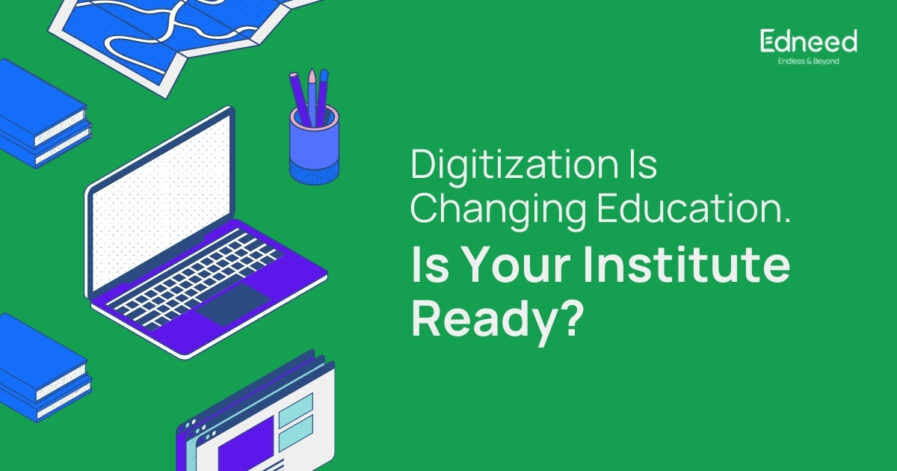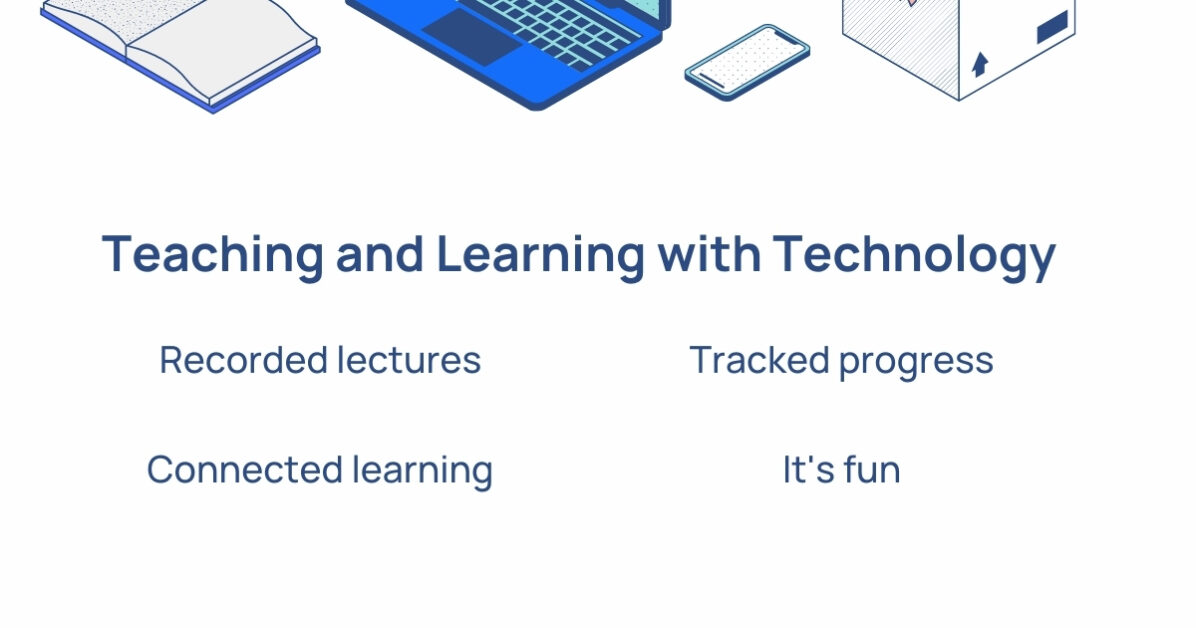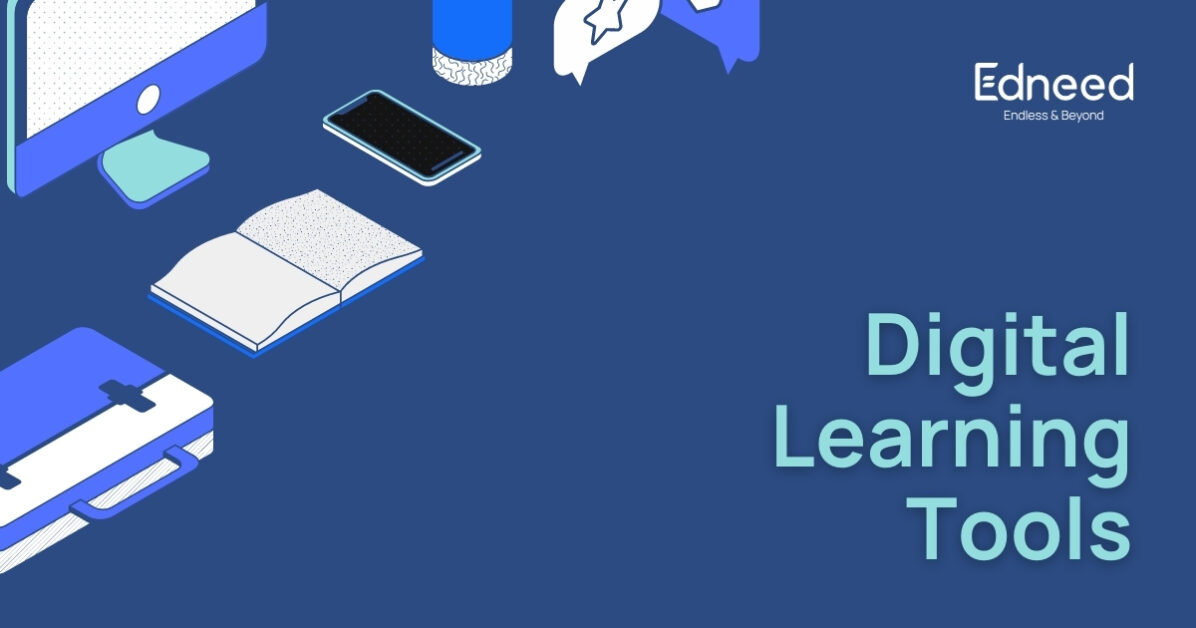
Digitization is Changing Education, is your Institute Ready?
“Technology is an effective tool that can make education more meaningful and engaging for teachers and students alike.”
Imagine a world in which students don’t relate to traditional classrooms, and teachers can use high-quality digital learning materials from anywhere in the world to teach. The traditional classroom turns into hallways, desks, and chairs. While personalized learning experiences happen anytime, anywhere. Do you want to be a part of this futuristic vision? Or just simply want to be dragged around, unable to teach and unable to learn?
The Future of Education: Digitizing the System to Prepare for the Future
The internet has held a large stake in changing the world in the last few decades. The change in the way we shop, book taxis, and order food has been made possible by the internet. Along with this, if we talk about the field of education, we have been witness to effective changes in the last few years.
Until recently, teaching was going on in the traditional way. And in the name of digital presence, educational institutions used to have only websites. However, the number of such educational institutions was very small in a country like India. Digital changes took place at a very slow pace in the field of education and the trend of smart classrooms in India started only a few years back
What is Digital Education and How It is Changing Education
In recent times, revolutionary changes have been seen in the field of education. Digital education is a boon especially for the whole world including developing countries.
There are mainly 3 components of digital education:
- Study Material
- Technology Platform
- Distribution Infrastructure
There is enough potential and character in the Indian IT sector to provide excellent digital content and assistive technology platforms. Even some EdTech companies are providing best-in-class solutions to digitize the institutes.
In India, where mobile penetration is close to a billion people, with over 200 million people connected to the Internet, and is expected to reach 550 million by 2018, the potential to educate the masses digitally appears to be immense. Digital and live virtual classrooms at various levels of learning have grown significantly over the years. There is a huge potential for integrating technology with the education industry with the development of technologies like cloud, data center, and virtualization.
Apart from its cost and accessibility advantages, digital education is a win-win for all. Education institutions see rapid growth in enrollment and additional revenue. Students see this as a flexible option that allows them to study according to their own time and pace. Teachers also find it convenient to plan their learning with the help of technology. Teaching becomes a smooth experience with a perfect network of individual packages that mix animation, gamification, and elaborate audio-visual effects.
Flexibility of Digital Learning

- Recorded lectures
One of the biggest advantages of digital learning is that some of your classes will be recorded. This means that if you miss something, or later feel that you do not understand a particular topic properly, you can go back and revisit the class to get the answers you need.
- 24-hour resource
Perhaps you find it easier to focus in the evening, or you just can’t sleep, and want to do some extra studying – with digital learning, you won’t have to worry about the library or lab being closed. You will be able to access your learning material online at any time.
- Connected learning
You will be part of the community of online learners if you choose online learning. If you need some help, tools like Zoom and Google Meet can connect you with your classmates so you can quickly find your answers.
Additionally, despite being physically separated from your classmates, you can maintain contact through technology like video conferencing and online learning communities.
- Tracked progress
Your teachers can track your progress through digital learning, as well as identify your strengths and weaknesses. They will have an easily accessible online record of all your actions, and will also be able to monitor your engagement.
- It’s fun
Last but not least, online study is as highly effective as it is fun! This type of course material is highly engaging, so it encourages you to participate more in your classes. In fact, you might not even realize how much information you absorb while you’re having fun!
Tools for Digital Learning

Institutes that were digitized with Edneed, get the support of two different video conferencing platforms. These can also be used in web mode.
- Zoom: Video conferencing with this cloud-based solution can be a great option for conducting online classes. Students and teachers can collaborate, schedule classes, and even tutor each other. In addition to the keyboard shortcuts and closed captioning, there is exceptional clarity in the video sessions that will enhance the overall experience for every learner.
- Google Meet: It is a quick and easy way for educators to connect with students via live video. Teachers can use it to do instruction, to hold group discussions.
Apart from these two, students and teachers, both can use Edneed’s community Learning for free. On the community page, they can share their knowledge, put up questions, and can give answers as well.
Conclusion
The educational process is changing and it revolves around digital learning. Many educators and students are in favor of digitizing education in order to prepare for the future. The changes in digitizing education will ultimately affect our future and what we understand of time and experience. It is important for schools to start utilizing digital learning so students can be more prepared for the digital world.
-
Pingback: https://blog.edneed.com/edneed-is-helping-in-di...
-
Pingback: https://blog.edneed.com/edneed-is-helping-in-di...
